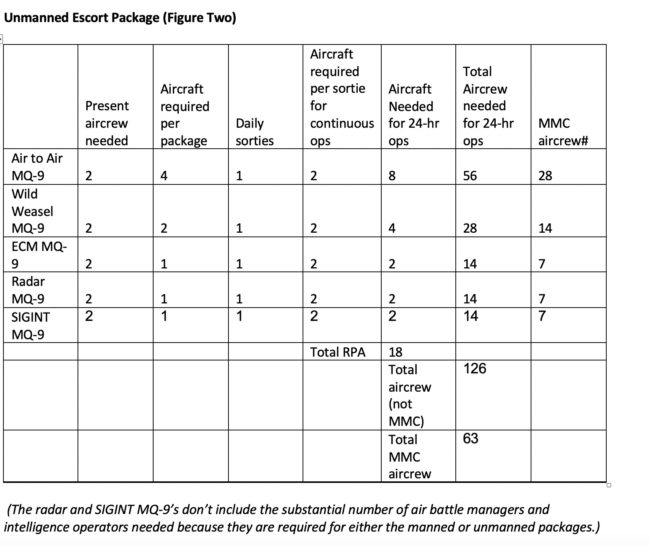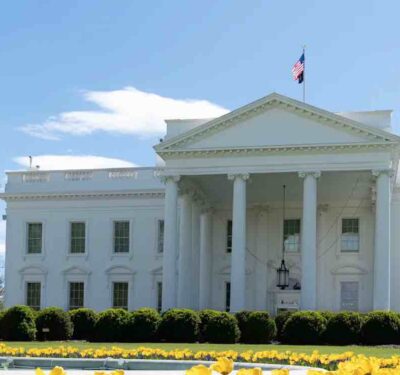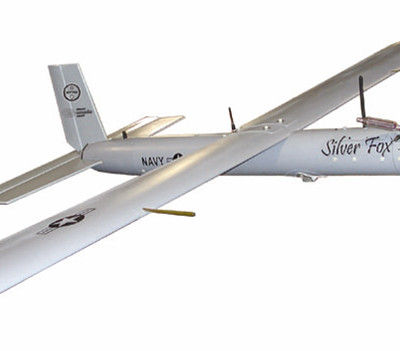
A Global Hawk RQ-4A, the model that was shot down, on patrol in calmer times.
By now, the world knows that Iran shot down a U.S. Navy RQ-4A operating over international airspace during peacetime with a surface to air missile (SAM). That’s a big deal for unmanned warfare. Shooting down remotely piloted aircraft (RPA) during war isn’t a big deal. The U.S. has lost quite a few modern drones in combat over the years. Sadly, shooting down recce aircraft operating over international waters during peacetime isn’t momentous either. Few people know it, but the U.S. lost more than 40 reconnaissance aircraft during the Cold War, with hundreds of airmen missing or killed.
If it is no big deal to shoot down RPAs in combat or recce aircraft in peacetime, why was it momentous when Iran downed a Navy Global Hawk? Because the Trump administration’s reaction and U.S. tactics in the Arabian Gulf have combined to potentially turn American reconnaissance RPA’s into routine targets, threatening a significant portion of our intelligence collection.
A Likely Scenario
Before we get into the tactics and policy implications, let’s review what I think happened. NAVCENT (U.S. Naval Forces, Central Command) tasked one of their ex-USAF Block 10 RQ-4A Global Hawks to watch Iranian naval and Revolutionary Guard naval forces in the Persian Gulf. The Iranian Revolutionary Guard had been placing limpet mines on multinational tankers, so COMNAVCENT (Commander, NAVCENT) understandably wanted to know where the Guard’s vessels were at all times. NAVCENT picked the Global Hawk because it does an amazing job of tracking naval vessels from high altitude at extremely long range.
This wasn’t one of the Navy’s new MQ-4C Tritons. RQ-4As are ex-USAF Block 10 Global Hawks from the early 2000s, whereas MQ-4Cs were designed from the start to provide naval reconnaissance. Tritons carry a full-motion video camera, a sense-and-avoid radar and other improvements, in addition to an SAR and EO sensor.
The Navy RQ-4A was absolutely flying in international airspace. The U.S. would never risk an international incident by intentionally flying such a large, easily observed aircraft in Iranian airspace, and even Block 10 Global Hawk sensors could accomplish the mission beyond borders. It is also extremely unlikely that a Global Hawk inadvertently penetrated Iranian airspace. Unlike the USAF MQ-9, which requires a pilot to command the air vehicle, the RQ-4 is semi-autonomous. RQ-4 pilots tell the vehicle where to fly via GPS waypoints and the RQ-4 figures out how to configure its control surfaces to get there. Even if the Iranians jammed the Global Hawk control link, the air vehicle would find its own way home. Iranian airspace would have been a no-go zone in the Global Hawk software.
The shoot-down also wasn’t a statement of Iranian military or technical superiority. Operating at high altitude hasn’t helped U.S. recce aircraft against long-range surface to air missiles (SAMs) since the Soviets shot down Gary Powers in the ’60s. Shooting down a Block 10 Global Hawk flying unescorted in peacetime would have been easy for several types of Iranian SAMs. In wartime, that RQ-4A would have had a “package” of escort aircraft to ensure it survived enemy air defenses. USAF AWACS and RC-135’s would have scanned Iranian sites to detect its fighters or SAM radars. USAF F-15’s and F-22’s would have intercepted any Iranian aircraft brave enough to get airborne. USN EF-18G’s Prowlers would have jammed Iranian radars, and USAF F-16CJ Wild Weasels would have launched radar homing missiles at Iranian SAM radars as they attempted to track the Global Hawk.
Problems and Solutions
The lack of an escort package brings us to the first problem after this shoot down—U.S. tactics for long-endurance remotely piloted aircraft (RPA) operating against adversary air defenses. The U.S. hasn’t used RPA’s in large numbers against enemy networks since engaging the Iraqi no fly zones in 2003. Until now, the U.S. flew RPAs against enemies who couldn’t shoot back. Even when the U.S. did fly against enemy systems, the tactic over Iraq was to not get overly concerned about losing MQ-1 Predators. This was because the Predator flew for 24 hours at a time and Central Command (CENTCOM) never had the assets to escort a single Predator like they did with manned aircraft flying over Iraq. Hence, the Predator flew over Iraq by itself and CENTCOM just accepted the loss of three to Iraqi countermeasures as the cost of doing business. That’s an acceptable tactic during hostilities, but not for peacetime. As we’ve learned with the Global Hawk shootdown, RPA losses in peacetime can create an international incident.
It would still be too expensive to escort long endurance RPAs with manned aircraft. Global Hawks fly for over 24 hours and would require a four-ship deployment of F-22’s, an AWACS and an RC-135; a pair of F-16CJs Wild Weasels; and at least one EF-18G Prowler jamming aircraft to make sure they stayed safe. All of these aircraft would need refuelling from tankers. A package like this would also put a substantial number of airmen in harm’s way to escort an expensive but unmanned aircraft. Figure One shows the number of manned aircraft and aircrew that would be needed to escort a daily Global Hawk mission.

What to do? I say that if unmanned systems got us into this problem, they can get themselves out of it. The U.S. should use the tremendous endurance of RPAs for more than just reconnaissance and dropping the occasional bomb. I think that General Atomics MQ-9s flying in teams to replicate the functions of manned escort aircraft could provide a long-endurance escort package to protect long-endurance surveillance RPAs. One MQ-9 would carry an L3 Signals Intelligence (SIGINT) ISR pod to detect Iranian SAM radars and warn other RPAs in the area (https://www.l3t.com/press-release/ga-asi-and-l3-technologies-develop-and-fly-full-band-signals-intelligence-solution-mq). This pod exists already and was just announced at the Paris Air Show. Another MQ-9 would carry an airborne electronically scanned array radar pod to replicate AWACS radar coverage—General Atomics is already working with several partners to develop this pod.
Other MQ-9s would carry electronic countermeasures pods to jam adversary search, acquisition and SAM radars. The MQ-9 already has a “Sledge Hammer” electronic countermeasures pod, developed for Special Operations Command’s multi-mission payload program. Additional MQ-9’s would have a more lethal role—some would carry AIM-9X heat-seeking air-to-air missiles to shoot down Iraqi fighters and others would carry AGM-88 HARM (high-speed anti-radiation) missiles to destroy Iranian SAMs. Believe it or not, MQ-1’s and MQ-9’s already have been in dogfights. In 2002, a USAF MQ-1 engaged an Iraqi MiG-25 Foxbat with a Stinger air-to-air missile.The Predator lost that fight, but in 2017 an MQ-9 equipped with the much more advanced AIM-9X successfully engaged another drone that was simulating an enemy fighter. The Air Force hasn’t mounted HARM missiles on the MQ-9 yet, but it wouldn’t be difficult.
The Air Force could keep this RPA escort package flying with a fraction of the number of aircraft and aircrew required by a manned escort package. An MQ-9 can keep a combat air patrol (CAP) going 24×7 with two aircraft and seven aircrew. Currently, the MQ-9 requires a pilot and sensor operator for each CAP, but the new MQ-9 Block 50 ground control station allows single-pilot operations and Multi-Mission Control (MMC) to control multiple MQ-9s simultaneously.
Figure Two shows the substantial aircraft and aircrew savings from allowing unmanned systems to protect each other. Note that I didn’t count the “backend” crew of air battle managers on AWACS and intelligence operators on the RC-135 because they’re required for both manned and unmanned escort packages, but the unmanned backend operators would remain on the ground.

An unmanned escort package would give policymakers a way to allow drones to defend themselves without risking aircrew. Manned aircraft might be proscribed from entering adversary airspace to make sure their missiles hit, but RPAs might be allowed in. Adversaries would quickly get the message that U.S. RPAs shoot back.
The Real Issue
These questions leave us with the real issue with the Global Hawk shoot down—policy. This was the first time the U.S. lost a large RPA flying in international airspace during peacetime and the Administration’s response has been confusing thus far. President Trump initially viewed the Iranian shoot down for what it was—a military action taken against a sovereign U.S. aircraft operating legally in international airspace—and planned a limited strike against the Iranian sites involved in this aggressive act. He then reversed course with a tweet saying, “We were cocked & loaded to retaliate last night on 3 different sights [sic] when I asked, how many will die. 150 people, sir, was the answer from a General. 10 minutes before the strike I stopped it. (It was) not proportionate to shooting down an unmanned drone.” I’ll leave aside concerns about failing to ask about adversary casualties until 10 minutes before a strike during peacetime and concentrate on the implied message that it’s permissible to strike U.S. aircraft operating legally in peacetime as long as they are unmanned.
That’s a terrible message to send to our adversaries. A great deal of our intelligence is gathered by unmanned systems—many in space, some in the air and a few in the ocean. The principle of unfettered access to international waters (and later, airspace) goes back to the 18thcentury. If a four-hundred-year-old legal principle isn’t enough to protect our unmanned aerial systems, will the 1967 Outer Space Treaty, which Iran signed but never ratified, protect our unmanned space systems? Failing to respond to adversaries shooting down American reconnaissance systems in peacetime because they’re unmanned could leave America blind and deaf.
Trump went on to make things worse for our vital unmanned systems when he said, “There was no man or woman in it. It would have made a big difference if a plane carrying people had been shot down. It would have made a big, big difference.” That statement clearly implies that adversaries can get away with shooting down American aircraft operating in international airspace as long as they’re unmanned.
Don’t get me wrong; I’m not advocating a military response to the shoot-down. Indeed, few of the manned aircraft shot down in the Cold War drew military responses. I’m also not saying that the economic sanctions President Trump imposed in response to the shoot-down were wrong. I am saying that the U.S. declared policy should be to expect a strong American response to aggressive action against any American aircraft, ship, sub or satellite operating legally in international airspace or seas, whether they are manned or unmanned. If the U.S. doesn’t adopt this policy, it may have turned the Global Hawk into a $200 million clay pigeon.






